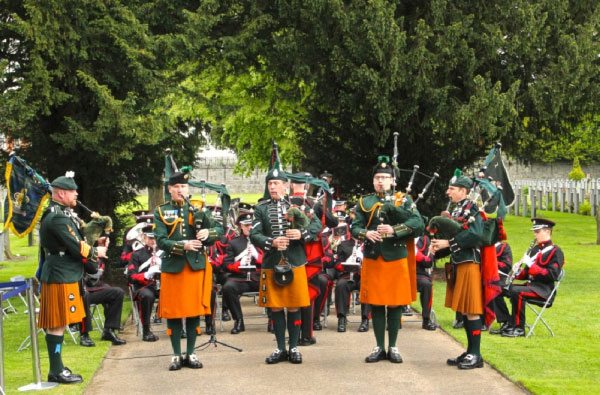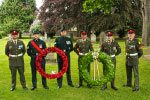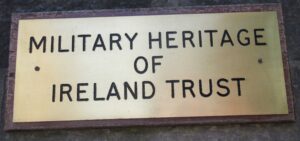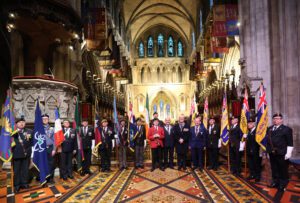On Thursday 26 May, a State Ceremony took place at Dublin’s Grangegorman Military Cemetery to mark the deaths of British soldiers during the Easter Rising of 1916, The Minister for Foreign Affairs and Trade, Charlie Flanagan T.D., represented the Government. Minister Flanagan was accompanied by the Minister for Regional Development, Rural Affairs, Arts & the Gaeltacht, Heather Humphreys T.D., and by Minister of State with special responsibility for Defence, Paul Kehoe T.D. The Chief of Staff Vice-Admiral Mark Mellot DSM and GOC 2 Brigade Brigadier-General Michael Beary represented the Defence Forces. The Minister for Foreign Affairs Charlie Flanagan TD and the British Ambassador H.E. Dominick Chilcott laid wreaths behalf of the Irish and British governments.
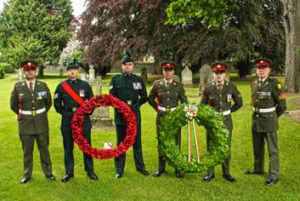
The Defence Forces and the British Armed Forces provided ceremonial elements including Chaplains, Colour Parties and Instrumentalists.
The Defence Forces Number 1 Band played appropriate music throughout the ceremony.
The solemn wreath-laying was followed by a minute of silent reflection, a piper’s lament, the rendering of the Last Post and Reveille and the playing of the National Anthem. Relatives of the British soldiers who died were also in attendance.
The Military Heritage of Ireland Trust (CLG) was represented by Lieutenant-Colonel Bill Gibson (Retd). The State Ceremony, led by the Department of Foreign Affairs and Trade, was part of the Ireland 2016 Centenary Programme.
Speaking ahead of the event, Minister Flanagan said:
“Today’s ceremony is about recognising the many different narratives and experiences that made up the events of the Easter Rising. As many as 125 soldiers of the British Armed Forces died during the Easter Rising. They came from every province on the island of Ireland, as well as England, Wales, Scotland and further afield.
“Like those that died a hundred years ago, those of us participating in today’s event are a diverse group of individuals, with different backgrounds, beliefs and aspirations. Such differences do not divide us and need not hinder us from coming together to reflect upon the moments that have shaped our islands’ history.
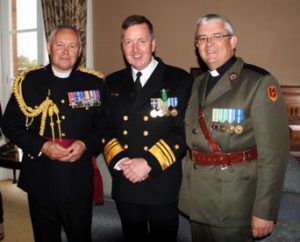 In the century since the events of 1916 we have learned, through painful experience, the importance of mutual respect for the different traditions and multiple narratives across these islands.
In the century since the events of 1916 we have learned, through painful experience, the importance of mutual respect for the different traditions and multiple narratives across these islands.
“Days like today are an opportunity to broaden our understanding of all the varied influences that contributed to making the Ireland and Britain of today and to demonstrate our respect for all the traditions of these islands.
Reconciliation and mutual respect are at the heart of how we approach this Decade of Centenaries and of how we develop the ever stronger relationships that continue to flourish East and West, North and South.”
Dublin’s Grangegorman Military Cemetery was founded in 1876 as a graveyard for soldiers (and their families) of what was Marlborough Barracks, now McKee Barracks. It is the largest military cemetery in Ireland.
The cemetery contains the remains of soldiers from across the British Empire, who died of natural causes, or of their injuries, or who died or were killed in action in Ireland. There are some remains of soldiers who fought in the Crimean War.
